-
EXECUTIVE SUMMARY
-
MARKET INTRODUCTION
-
MARKET
-
DEFINITION
-
SCOPE OF THE STUDY
-
ASSUMPTIONS & LIMITATIONS
-
2.4
-
MARKET STRUCTURE
-
KEY TAKEAWAYS
-
MARKET INSIGHTS
-
RESEARCH
-
METHODOLOGY
-
RESEARCH PROCESS
-
PRIMARY RESEARCH
-
4.3
-
SECONDARY RESEARCH
-
MARKET SIZE ESTIMATION
-
FORECAST MODEL
-
5
-
MARKET DYNAMICS
-
INTRODUCTION
-
DRIVERS
- HIGH DEMAND FOR DYES &
- EXPANDING TEXTILE INDUSTRY IN ASIA-PACIFIC
- INCREASING USE OF DYES & PIGMENTS IN THE DIGITAL PRINTING
- HEALTHY GROWTH OF THE CONSTRUCTION INDUSTRY IN THE DEVELOPING ECONOMIES
-
PIGMENTS IN THE TEXTILE INDUSTRY
-
AND THE MIDDLE EAST
-
SECTOR
-
-
5.3
-
RESTRAINTS
-
- 5.3.1 STRINGENT REGULATORY FRAMEWORK PERTAINING TO THE USE OF SYNTHETIC
-
DYES
-
- 5.3.2 VOLATILE RAW MATERIAL PRICES
-
OPPORTUNITIES
-
CHALLENGES
-
MARKET FACTOR ANALYSIS
-
SUPPLY CHAIN ANALYSIS
- MANUFACTURERS/PRODUCERS
- DISTRIBUTORS/RETAILERS/WHOLESALERS/E-COMMERCE
- END-USERS
-
6.1.1
-
RAW MATERIAL SUPPLIERS
-
MERCHANTS
-
PORTER’S FIVE FORCES ANALYSIS
- INTENSITY OF COMPETITIVE RIVALRY
- BARGAINING POWER OF SUPPLIERS
- BARGAINING POWER OF BUYERS
-
6.2.1
-
THREAT OF NEW ENTRANTS
-
6.2.3
-
THREAT OF SUBSTITUTES
-
PRICING ANALYSIS
-
IMPACT OF COVID-19 ON THE GLOBAL MARKET
-
7.
-
GLOBAL DYES & PIGMENTS MARKET, BY TYPE
-
INTRODUCTION
-
DYES
- MARKET ESTIMATES & FORECAST,
-
7.2.1
-
MARKET ESTIMATES & FORECAST, 2018–2027
-
BY REGION, 2018–2027
-
7.2.2.3
-
ACID DYES
-
PIGMENTS
- MARKET
- MARKET ESTIMATES & FORECAST,
-
ESTIMATES & FORECAST, 2018–2027
-
BY REGION, 2018–2027
-
8.
-
GLOBAL DYES & PIGMENTS MARKET, BY END-USE INDUSTRY
-
INTRODUCTION
-
TEXTILE
- MARKET ESTIMATES & FORECAST,
-
8.2.1
-
MARKET ESTIMATES & FORECAST, 2018–2027
-
BY REGION, 2018–2027
-
PAINTS & COATINGS
- MARKET ESTIMATES & FORECAST,
- MARKET ESTIMATES & FORECAST, BY REGION, 2018–2027
- MARKET ESTIMATES & FORECAST, 2018–2027
-
8.4
-
PRINTING INKS
-
8.4.2
-
MARKET ESTIMATES & FORECAST, BY REGION, 2018–2027
-
LEATHER
- MARKET
- MARKET ESTIMATES & FORECAST,
-
ESTIMATES & FORECAST, 2018–2027
-
BY REGION, 2018–2027
-
PLASTICS
- MARKET ESTIMATES & FORECAST,
- MARKET ESTIMATES & FORECAST, BY REGION, 2018–2027
- MARKET ESTIMATES & FORECAST, 2018–2027
-
8.7
-
PULP & PAPER
-
8.7.2
-
MARKET ESTIMATES & FORECAST, BY REGION, 2018–2027
-
OTHERS
- MARKET ESTIMATES & FORECAST,
- MARKET ESTIMATES & FORECAST, BY REGION, 2018–2027
-
9.
-
GLOBAL DYES & PIGMENTS MARKET, BY REGION
-
INTRODUCTION
-
NORTH
- MARKET ESTIMATES & FORECAST, 2018–2027
- MARKET
- MARKET ESTIMATES & FORECAST,
- US
- CANADA
-
AMERICA
-
ESTIMATES & FORECAST, BY TYPE, 2018–2027
-
BY END-USE INDUSTRY, 2018–2027
-
FORECAST, 2018–2027
-
9.2.5.2
-
MARKET ESTIMATES & FORECAST, BY TYPE, 2018–2027
-
FORECAST, BY END-USE INDUSTRY, 2018–2027
-
9.3.3
-
MARKET ESTIMATES &
-
EUROPE
- MARKET ESTIMATES & FORECAST,
- MARKET ESTIMATES & FORECAST, BY TYPE, 2018–2027
-
MARKET ESTIMATES & FORECAST, BY END-USE INDUSTRY, 2018–2027
-
9.3.4
-
GERMANY
-
ESTIMATES & FORECAST, BY TYPE, 2018–2027
-
FORECAST, BY END-USE INDUSTRY, 2018–2027
-
ESTIMATES & FORECAST, 2018–2027
-
FORECAST, BY TYPE, 2018–2027
-
BY END-USE INDUSTRY, 2018–2027
-
FORECAST, 2018–2027
-
9.3.7.2
-
MARKET ESTIMATES & FORECAST, 2018–2027
-
MARKET
-
MARKET ESTIMATES &
-
FRANCE
-
MARKET
-
MARKET ESTIMATES &
-
MARKET ESTIMATES & FORECAST,
-
ITALY
-
MARKET ESTIMATES &
-
MARKET ESTIMATES & FORECAST, BY TYPE,
-
MARKET ESTIMATES & FORECAST, BY END-USE INDUSTRY,
-
SPAIN
-
MARKET ESTIMATES & FORECAST, 2018–2027
-
MARKET ESTIMATES & FORECAST, BY TYPE, 2018–2027
-
FORECAST, BY END-USE INDUSTRY, 2018–2027
-
FORECAST, 2018–2027
-
9.3.9.2
-
MARKET ESTIMATES &
-
UK
-
MARKET ESTIMATES &
-
MARKET ESTIMATES & FORECAST, BY TYPE,
-
MARKET ESTIMATES & FORECAST, BY END-USE INDUSTRY,
-
RUSSIA
-
MARKET ESTIMATES & FORECAST, 2018–2027
-
MARKET ESTIMATES & FORECAST, BY TYPE, 2018–2027
-
FORECAST, BY END-USE INDUSTRY, 2018–2027
-
9.3.10.1
-
MARKET ESTIMATES & FORECAST, 2018–2027
-
FORECAST, BY TYPE, 2018–2027
-
BY END-USE INDUSTRY, 2018–2027
-
9.4.3
-
MARKET ESTIMATES &
-
REST OF EUROPE
-
MARKET ESTIMATES &
-
MARKET ESTIMATES & FORECAST,
-
ASIA-PACIFIC
- MARKET ESTIMATES & FORECAST,
- MARKET ESTIMATES & FORECAST, BY TYPE, 2018–2027
-
MARKET ESTIMATES & FORECAST, BY END-USE INDUSTRY, 2018–2027
-
9.4.4
-
CHINA
-
ESTIMATES & FORECAST, BY TYPE, 2018–2027
-
FORECAST, BY END-USE INDUSTRY, 2018–2027
-
ESTIMATES & FORECAST, 2018–2027
-
FORECAST, BY TYPE, 2018–2027
-
BY END-USE INDUSTRY, 2018–2027
-
FORECAST, 2018–2027
-
FORECAST, 2018–2027
-
FORECAST, 2018–2027
-
9.5.3
-
MARKET ESTIMATES & FORECAST, 2018–2027
-
MARKET
-
MARKET ESTIMATES &
-
INDIA
-
MARKET
-
MARKET ESTIMATES &
-
MARKET ESTIMATES & FORECAST,
-
JAPAN
-
MARKET ESTIMATES &
-
MARKET ESTIMATES & FORECAST, BY TYPE,
-
MARKET ESTIMATES & FORECAST, BY END-USE INDUSTRY,
-
AUSTRALIA & NEW ZEALAND
-
MARKET ESTIMATES &
-
MARKET ESTIMATES & FORECAST, BY TYPE,
-
MARKET ESTIMATES & FORECAST, BY END-USE INDUSTRY,
-
REST OF ASIA-PACIFIC
-
MARKET ESTIMATES &
-
MARKET ESTIMATES & FORECAST, BY TYPE,
-
MARKET ESTIMATES & FORECAST, BY END-USE INDUSTRY,
-
MIDDLE EAST & AFRICA
- MARKET ESTIMATES & FORECAST,
- MARKET ESTIMATES & FORECAST, BY TYPE, 2018–2027
-
MARKET ESTIMATES & FORECAST, BY END-USE INDUSTRY, 2018–2027
-
9.5.4
-
TURKEY
-
ESTIMATES & FORECAST, BY TYPE, 2018–2027
-
FORECAST, BY END-USE INDUSTRY, 2018–2027
-
ESTIMATES & FORECAST, 2018–2027
-
FORECAST, BY TYPE, 2018–2027
-
BY END-USE INDUSTRY, 2018–2027
-
ESTIMATES & FORECAST, 2018–2027
-
FORECAST, BY TYPE, 2018–2027
-
BY END-USE INDUSTRY, 2018–2027
-
FORECAST, 2018–2027
-
ESTIMATES & FORECAST, 2018–2027
-
FORECAST, BY TYPE, 2018–2027
-
BY END-USE INDUSTRY, 2018–2027
-
9.6.3
-
MARKET ESTIMATES & FORECAST, 2018–2027
-
MARKET
-
MARKET ESTIMATES &
-
ISRAEL
-
MARKET
-
MARKET ESTIMATES &
-
MARKET ESTIMATES & FORECAST,
-
SOUTH AFRICA
-
MARKET
-
MARKET ESTIMATES &
-
MARKET ESTIMATES & FORECAST,
-
GCC
-
MARKET ESTIMATES &
-
MARKET ESTIMATES & FORECAST, BY TYPE,
-
MARKET ESTIMATES & FORECAST, BY END-USE INDUSTRY,
-
REST OF THE MIDDLE EAST & AFRICA
-
MARKET
-
MARKET ESTIMATES &
-
MARKET ESTIMATES & FORECAST,
-
LATIN AMERICA
- MARKET ESTIMATES & FORECAST,
- MARKET ESTIMATES & FORECAST, BY TYPE, 2018–2027
-
MARKET ESTIMATES & FORECAST, BY END-USE INDUSTRY, 2018–2027
-
9.6.4
-
BRAZIL
-
ESTIMATES & FORECAST, BY TYPE, 2018–2027
-
FORECAST, BY END-USE INDUSTRY, 2018–2027
-
ESTIMATES & FORECAST, 2018–2027
-
FORECAST, BY TYPE, 2018–2027
-
BY END-USE INDUSTRY, 2018–2027
-
FORECAST, 2018–2027
-
FORECAST, 2018–2027
-
MARKET ESTIMATES & FORECAST, 2018–2027
-
MARKET
-
MARKET ESTIMATES &
-
ARGENTINA
-
MARKET
-
MARKET ESTIMATES &
-
MARKET ESTIMATES & FORECAST,
-
MEXICO
-
MARKET ESTIMATES &
-
MARKET ESTIMATES & FORECAST, BY TYPE,
-
MARKET ESTIMATES & FORECAST, BY END-USE INDUSTRY,
-
REST OF LATIN AMERICA
-
MARKET ESTIMATES &
-
MARKET ESTIMATES & FORECAST, BY TYPE,
-
MARKET ESTIMATES & FORECAST, BY END-USE INDUSTRY,
-
COMPETITIVE LANDSCAPE
-
INTRODUCTION
-
KEY MARKET
-
STRATEGY ANALYSIS
-
KEY DEVELOPMENT ANALYSIS
-
(EXPANSIONS/MERGERS & ACQUISITIONS/JOINT
-
VENTURES/NEW PRODUCT DEVELOPMENTS/AGREEMENTS/INVESTMENTS)
-
COMPANY PROFILES
-
11.1
-
DIC CORPORATION
-
11.1.3
-
PRODUCT/BUSINESS SEGMENT OVERVIEW
-
11.1.6
-
KEY STRATEGIES
-
11.2.3
-
PRODUCT/BUSINESS SEGMENT OVERVIEW
-
11.2.6
-
KEY STRATEGIES
-
11.3.3
-
PRODUCT/BUSINESS SEGMENT OVERVIEW
-
11.3.6
-
KEY STRATEGIES
-
11.4.3
-
PRODUCT/BUSINESS SEGMENT OVERVIEW
-
11.4.6
-
KEY STRATEGIES
-
11.5.3
-
PRODUCT/BUSINESS SEGMENT OVERVIEW
-
11.5.6
-
KEY STRATEGIES
-
11.6.3
-
PRODUCT/BUSINESS SEGMENT OVERVIEW
-
11.6.6
-
KEY STRATEGIES
-
11.7.2
-
FINANCIAL OVERVIEW
-
11.7.5
-
COMPANY OVERVIEW
-
FINANCIAL OVERVIEW
-
KEY DEVELOPMENTS
-
SWOT ANALYSIS
-
ARCHROMA
- COMPANY OVERVIEW
- FINANCIAL OVERVIEW
- KEY DEVELOPMENTS
- SWOT ANALYSIS
-
DYSTAR
- COMPANY OVERVIEW
- FINANCIAL OVERVIEW
- KEY DEVELOPMENTS
- SWOT ANALYSIS
-
CLARIANT
- COMPANY OVERVIEW
- FINANCIAL OVERVIEW
- KEY DEVELOPMENTS
- SWOT ANALYSIS
-
LANXESS
- COMPANY OVERVIEW
- FINANCIAL OVERVIEW
- KEY DEVELOPMENTS
- SWOT ANALYSIS
-
BASF SE
- COMPANY OVERVIEW
- FINANCIAL OVERVIEW
- KEY DEVELOPMENTS
- SWOT ANALYSIS
-
KIRI INDUSTRIES LTD
- COMPANY OVERVIEW
- PRODUCT/BUSINESS SEGMENT OVERVIEW
- KEY DEVELOPMENTS
-
SWOT ANALYSIS
-
11.8.1
-
COMPANY OVERVIEW
-
OVERVIEW
-
11.9
-
HEUBACH GMBH
-
11.9.3
-
PRODUCT/BUSINESS SEGMENT OVERVIEW
-
11.9.6
-
KEY STRATEGIES
-
OVERVIEW
-
11.10.5
-
KEY STRATEGIES
-
HUNTSMAN INTERNATIONAL LLC
- FINANCIAL OVERVIEW
- PRODUCT/BUSINESS SEGMENT
- KEY DEVELOPMENTS
- SWOT ANALYSIS
- KEY STRATEGIES
- COMPANY OVERVIEW
- FINANCIAL OVERVIEW
- KEY DEVELOPMENTS
- SWOT ANALYSIS
-
NEELIKON
- COMPANY OVERVIEW
- FINANCIAL
- PRODUCT/BUSINESS SEGMENT OVERVIEW
- KEY DEVELOPMENTS
-
SWOT ANALYSIS
-
11.11.1
-
COMPANY OVERVIEW
-
OVERVIEW
-
11.12
-
ATUL LTD
-
OVERVIEW
-
11.13
-
CABOT CORPORATION
-
11.13.3
-
PRODUCT/BUSINESS SEGMENT OVERVIEW
-
11.13.6
-
KEY STRATEGIES
-
11.14.2
-
FINANCIAL OVERVIEW
-
DEVELOPMENTS
-
11.15
-
TRONOX HOLDINGS PLC
-
11.15.3
-
PRODUCT/BUSINESS SEGMENT OVERVIEW
-
11.15.6
-
KEY STRATEGIES
-
KEY STRATEGIES
-
DCL CORPORATION
- FINANCIAL OVERVIEW
- PRODUCT/BUSINESS SEGMENT
- KEY DEVELOPMENTS
- SWOT ANALYSIS
- KEY STRATEGIES
- COMPANY OVERVIEW
- FINANCIAL OVERVIEW
- PRODUCT/BUSINESS SEGMENT
- KEY DEVELOPMENTS
- SWOT ANALYSIS
- KEY STRATEGIES
- COMPANY OVERVIEW
- FINANCIAL OVERVIEW
- KEY DEVELOPMENTS
- SWOT ANALYSIS
-
KIWA CHEMICAL INDUSTRY CO., LTD
- COMPANY OVERVIEW
- PRODUCT/BUSINESS SEGMENT OVERVIEW
- KEY
- SWOT ANALYSIS
- KEY STRATEGIES
- COMPANY OVERVIEW
- FINANCIAL OVERVIEW
- KEY DEVELOPMENTS
- SWOT ANALYSIS
-
APPENDIX
-
-
LIST OF TABLES
-
GLOBAL
-
DYES & PIGMENTS MARKET, BY REGION, 2018–2027
-
NORTH AMERICA: DYES &
-
PIGMENTS MARKET, BY COUNTRY, 2018–2027
-
EUROPE: DYES & PIGMENTS
-
MARKET, BY COUNTRY, 2018–2027
-
ASIA-PACIFIC: DYES & PIGMENTS
-
MARKET, BY COUNTRY, 2018–2027
-
MIDDLE EAST & AFRICA: DYES
-
& PIGMENTS MARKET, BY COUNTRY, 2018–2027
-
LATIN AMERICA: DYES &
-
PIGMENTS MARKET, BY COUNTRY, 2018–2027
-
GLOBAL DYES & PIGMENTS
-
MARKET, FOR TYPE, BY REGION, 2018–2027
-
NORTH AMERICA: DYES &
-
PIGMENTS MARKET, FOR TYPE, BY COUNTRY, 2018–2027
-
EUROPE: DYES & PIGMENTS
-
MARKET, FOR TYPE, BY COUNTRY, 2018–2027
-
ASIA-PACIFIC: DYES &
-
PIGMENTS MARKET, FOR TYPE, BY COUNTRY, 2018–2027
-
MIDDLE EAST & AFRICA:
-
DYES & PIGMENTS MARKET, FOR TYPE, BY COUNTRY, 2018–2027
-
LATIN
-
AMERICA: DYES & PIGMENTS MARKET, FOR TYPE, BY COUNTRY, 2018–2027
-
TABLE
-
GLOBAL DYES & PIGMENTS MARKET, FOR END-USE INDUSTRY, BY REGION, 2018–2027
-
NORTH AMERICA: DYES & PIGMENTS MARKET, FOR END-USE INDUSTRY,
-
BY COUNTRY, 2018–2027
-
EUROPE: DYES & PIGMENTS MARKET, FOR
-
END-USE INDUSTRY, BY COUNTRY, 2018–2027
-
ASIA-PACIFIC: DYES &
-
PIGMENTS MARKET, FOR END-USE INDUSTRY, BY COUNTRY, 2018–2027
-
MIDDLE
-
EAST & AFRICA: DYES & PIGMENTS MARKET, FOR END-USE INDUSTRY, BY COUNTRY,
-
LATIN AMERICA: DYES & PIGMENTS MARKET, FOR END-USE
-
INDUSTRY, BY COUNTRY, 2018–2027
-
GLOBAL TYPE MARKET, BY REGION,
-
GLOBAL END-USE INDUSTRY MARKET, BY REGION, 2018–2027
-
NORTH AMERICA: DYES & PIGMENTS MARKET, BY COUNTRY, 2018–2027
-
TABLE
-
NORTH AMERICA: DYES & PIGMENTS MARKET, BY TYPE, 2018–2027
-
TABLE
-
NORTH AMERICA: DYES & PIGMENTS MARKET, BY END-USE INDUSTRY, 2018–2027
-
EUROPE: DYES & PIGMENTS MARKET, BY COUNTRY, 2018–2027
-
TABLE
-
EUROPE: DYES & PIGMENTS MARKET, BY TYPE, 2018–2027
-
EUROPE:
-
DYES & PIGMENTS MARKET, BY END-USE INDUSTRY, 2018–2027
-
ASIA-PACIFIC:
-
DYES & PIGMENTS MARKET, BY COUNTRY, 2018–2027
-
ASIA-PACIFIC: DYES &
-
PIGMENTS MARKET, BY TYPE, 2018–2027
-
ASIA-PACIFIC: DYES &
-
PIGMENTS MARKET, BY END-USE INDUSTRY, 2018–2027
-
MIDDLE EAST & AFRICA:
-
DYES & PIGMENTS MARKET, BY COUNTRY, 2018–2027
-
MIDDLE EAST & AFRICA:
-
DYES & PIGMENTS MARKET, BY TYPE, 2018–2027
-
MIDDLE EAST & AFRICA:
-
DYES & PIGMENTS MARKET, BY END-USE INDUSTRY, 2018–2027
-
LATIN
-
AMERICA: DYES & PIGMENTS MARKET, BY COUNTRY, 2018–2027
-
LATIN
-
AMERICA: DYES & PIGMENTS MARKET, BY TYPE, 2018–2027
-
LATIN
-
AMERICA: DYES & PIGMENTS MARKET, BY END-USE INDUSTRY, 2018–2027
-
-
LIST
-
OF FIGURES
-
GLOBAL DYES & PIGMENTS MARKET SEGMENTATION
-
FIGURE
-
FORECAST METHODOLOGY
-
PORTER’S FIVE FORCES ANALYSIS OF GLOBAL DYES
-
& PIGMENTS MARKET
-
SUPPLY CHAIN ANALYSIS OF GLOBAL DYES & PIGMENTS
-
MARKET
-
SHARE OF DYES & PIGMENTS MARKET, BY COUNTRY, 2018 (%)
-
FIGURE
-
GLOBAL DYES & PIGMENTS MARKET, 2018–2027
-
SUB-SEGMENTS OF TYPE
-
FIGURE
-
GLOBAL DYES & PIGMENTS MARKET SIZE, BY TYPE, 2018 (%)
-
SHARE OF GLOBAL DYES
-
& PIGMENTS MARKET, BY TYPE, 2018–2027
-
SUB-SEGMENTS OF END-USE
-
INDUSTRY
-
GLOBAL DYES & PIGMENTS MARKET SIZE, BY END-USE INDUSTRY,
-
SHARE OF GLOBAL DYES & PIGMENTS MARKET, BY END-USE INDUSTRY,

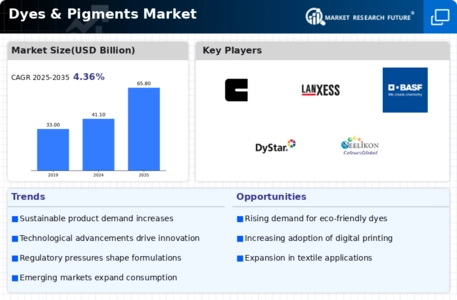
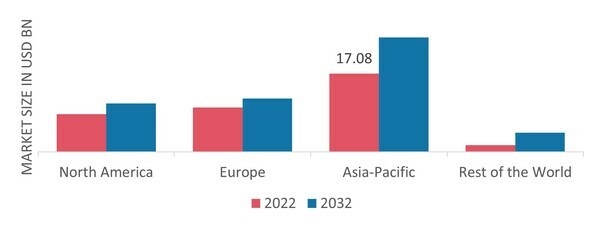

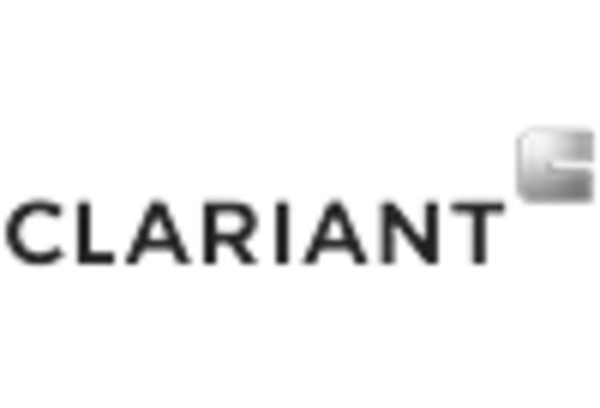

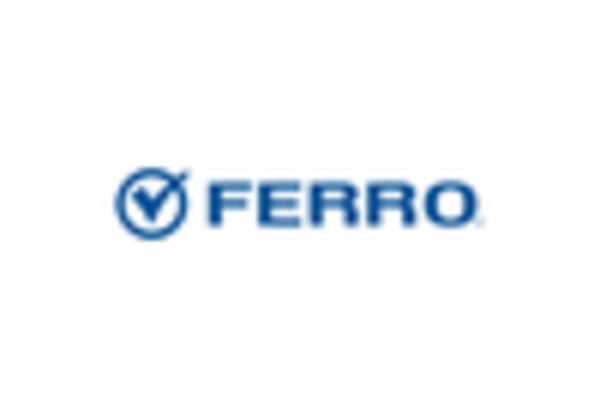

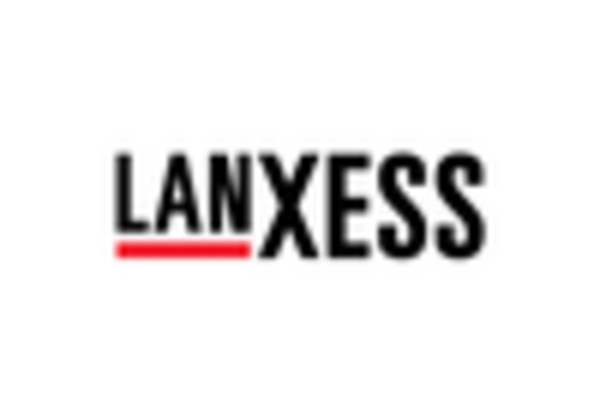

Leave a Comment